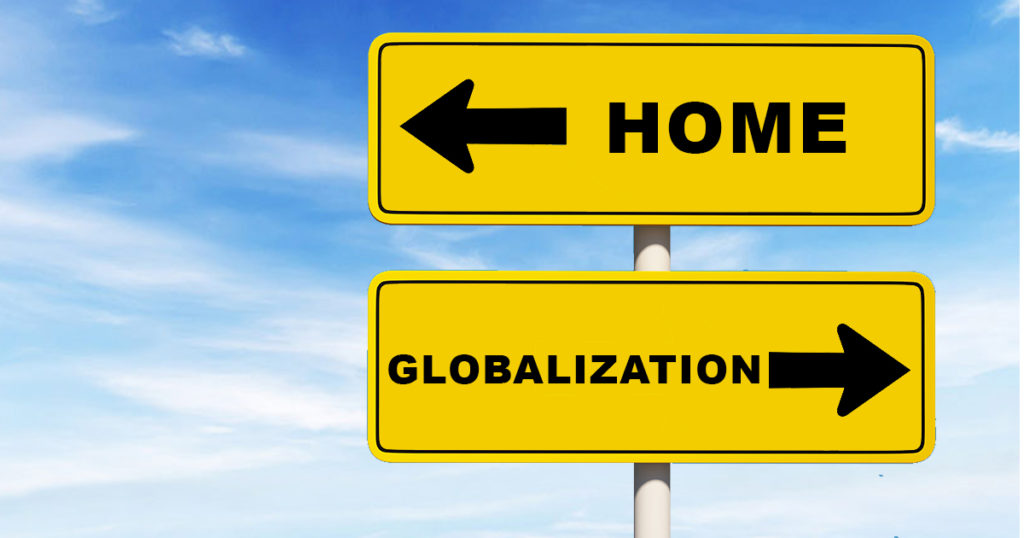Nathan Gardels is the editor-in-chief of Noema Magazine.
Even the most liberal thinkers are coming to grips with the fact that the cherished Enlightenment ideal of universal reason, from which the leaps and bounds in technology and globalization emanated, undermines a sense of belonging that cements social cohesion.
In the end, the open and inclusive values of liberalism appear at odds with belonging, which, by definition, is exclusive. It entails organizing the survival and sustenance of a community defined by those who are not part of it.
The lesson of the ongoing backlash against globalization is that political and cultural logic, rooted in emotion, identity and ways of life cultivated among one’s own kind, operates in a wholly different dimension than the rational and universalizing ethos of economics and technology. Far from moving forward in lock-step progress, when they meet, they clash.
In The WorldPost this week, philosopher Roger Scruton offers a meditation on this conundrum, partly framed through the fate of the international style of architecture, now going out of fashion, that arose as a universalist aesthetic meant to counter the nationalist upheavals at the turn of the 20th century.
He writes: “We are, as the Germans put it, heimatlich creatures — we have an inherent need to belong, and to belong somewhere, in a place to which we commit ourselves as we commit ourselves to the others who also belong there. This thought is disparaged by those who see only its negative side — the side that leads to belligerent nationalism and xenophobia. But those are the negative by-products of something positive, just as the international style was the negative by-product of a laudable desire to soften the barriers and smooth out the suspicions that had been brought into prominence by World War I.”
Not surprisingly, the post-globalization era we have entered is reviving the relevance of the early anti-universalist thinkers, going back to the Enlightenment. The 18th century Romantic philosopher Johann Gottfried Herder considered the great conquerors — Alexander the Great, Julius Caesar, Charlemagne and the universalists of the French Enlightenment — the “villains of history” who “stomped out native cultures.” He believed every culture possessed a unique Volksgeist, or way of life, incommensurate with others.
Following in his stead in the 20th Century, Isaiah Berlin argued that cosmopolitanism was an empty vessel. “[I]f the streams dried up … where men and women are not products of a culture, where they don’t have kith and kin and feel closer to some people than to others, where there is no native language — that would lead to a tremendous desiccation of everything that is human.”
Even the once-disgraced German philosopher Martin Heidegger, one of the first post-World War II critics of the homogenizing influence of American-led global modernization, is coming back into vogue. “[E]verything essential and of great magnitude,” Heidegger told a Der Spiegel interviewer in 1966, “has arisen only out of the fact that man had a home and was rooted in a tradition.”
Two contemporary philosophers who are engaging this issue are worth listening to. Peter Sloterdijk takes a spatial approach to the question of existence with his idea of “bubbles” as a kind of sheltering womb of belonging that all seek amid the ubiquitous connectivity of a homogenously synchronized world wrought by globalization. The other is the young Chinese philosopher, Yuk Hui, one of the most insightful thinkers on technology today.
Like Herder and Berlin, Hui argues that every culture has its own way of being derived from a founding cosmology, or worldview rooted in the particular circumstances of time and place. How that worldview is manifested in daily activities he calls “cosmotechnics.” “Thinking rooted in the earthy virtue of place,” he told me in a recent conversation, “is the motor of cosmotechnics.”
To salvage divergent ways of life from the headlong acceleration toward Silicon Valley-dominated technological singularity, he calls instead for fragmentation or bifurcation that will open the space for a return to “techno-diversity.” His quest is for alternative algorithms in the digital age that encode the kind of holistic unity embodied by Chinese medicine, which works in harmony with the natural order instead of seeking to overcome it. In short, Daoist robots.
Yet, the question remains: How to avoid nativism and intolerance by squaring diverse communities of belonging with the open and inclusive ethos of universal reason?
As in all things, the art is finding the balancing point in a continuum that unifies opposites. All we know is that the pursuit of pure states of being — whether of ideal pasts, utopian futures, superior races, true religions or the algorithms of singularity — are at odds with the diverse disposition of human nature.
One way to think about it is to return to Scruton’s architectural prism. Not long ago, I raised the very issue of the backlash against globalization and the international style of architecture with the celebrated architect Rem Koolhaas.
Back in the 1990s, he spoke often about the “generic city” that was emerging out of homogenizing globalization. “Convergence is possible only at the price of shedding identity,” he told me. “That is usually seen as a loss. But at the scale at which it occurs, it must mean something. What are the disadvantages of identity, and conversely, what are the advantages of blankness? … What is left after identity is stripped? The generic?”
So, I asked him, how do you see it now? He answered: “To the extent there was a global aesthetic developing in architecture, which would have been an international style, already in the 1980s people were critical of its inability to establish distinct identities. That is the reason postmodernism emerged. It both embraced a global aesthetic yet resisted it by mixing it with vernacular styles.”
In this sense, the new era of post-globalization will likely track post-modernism in architecture — a hybrid outcome in which a universal ethos is checked and balanced by the earthy virtue of place, and vice-versa.




